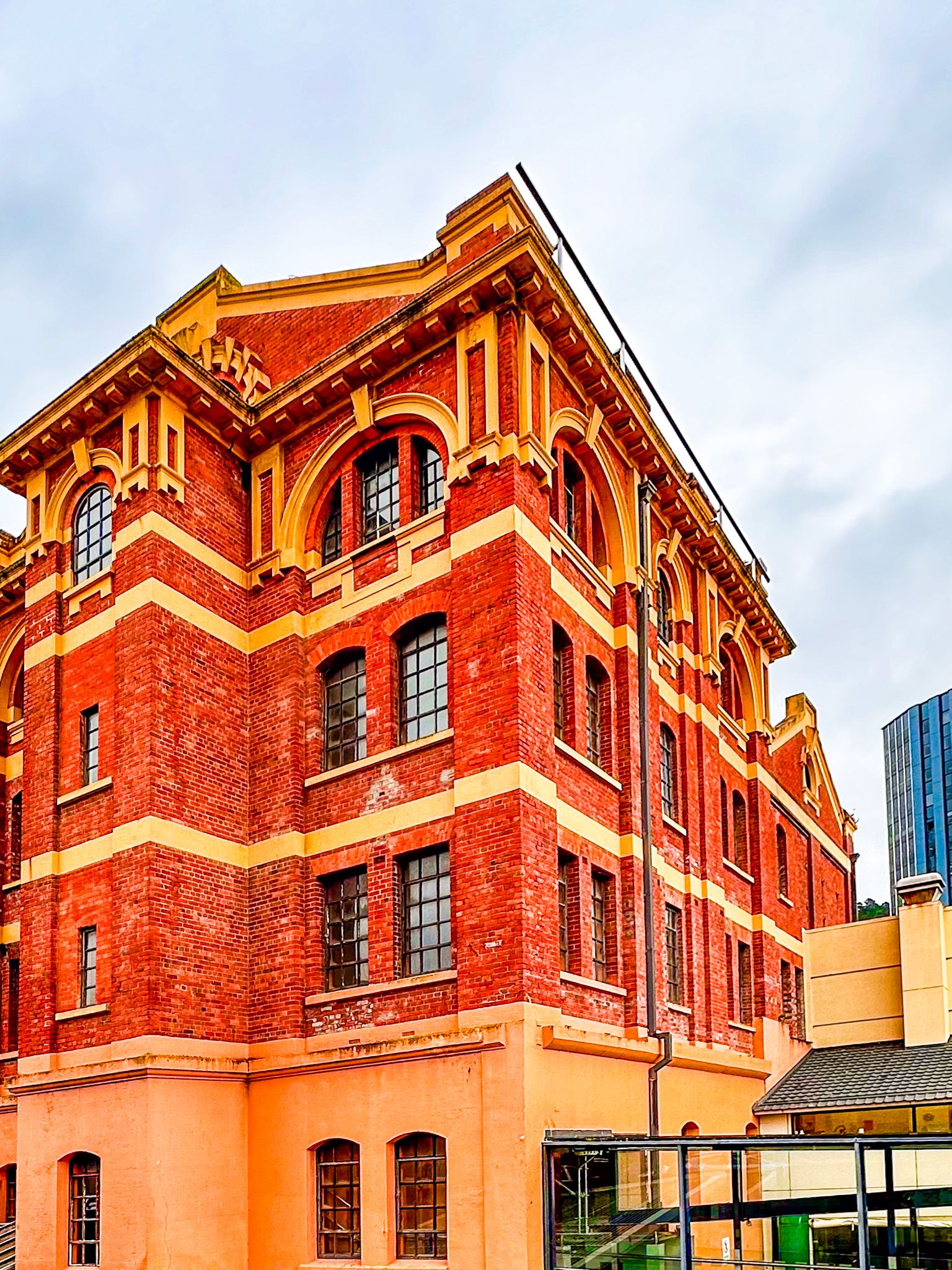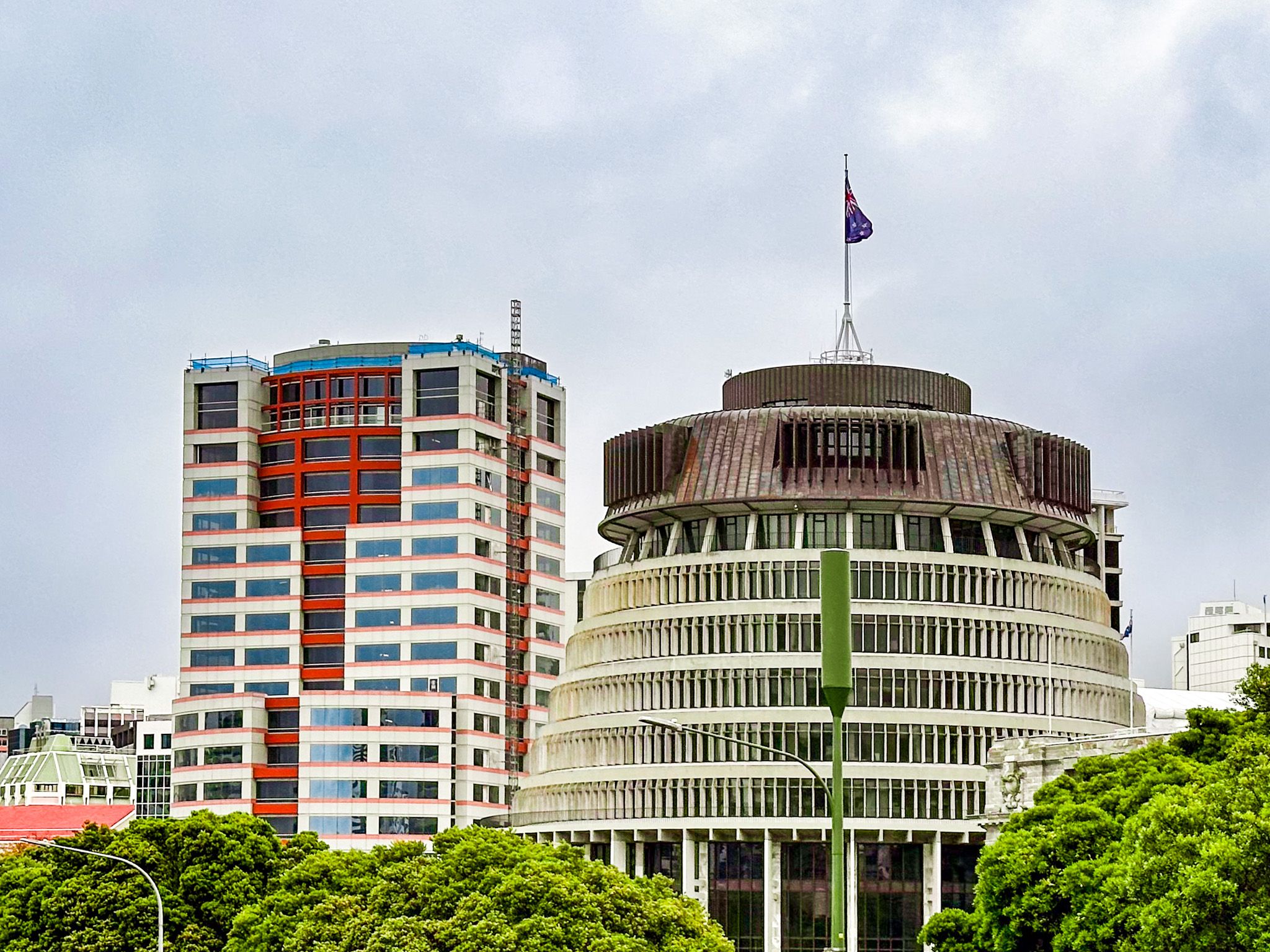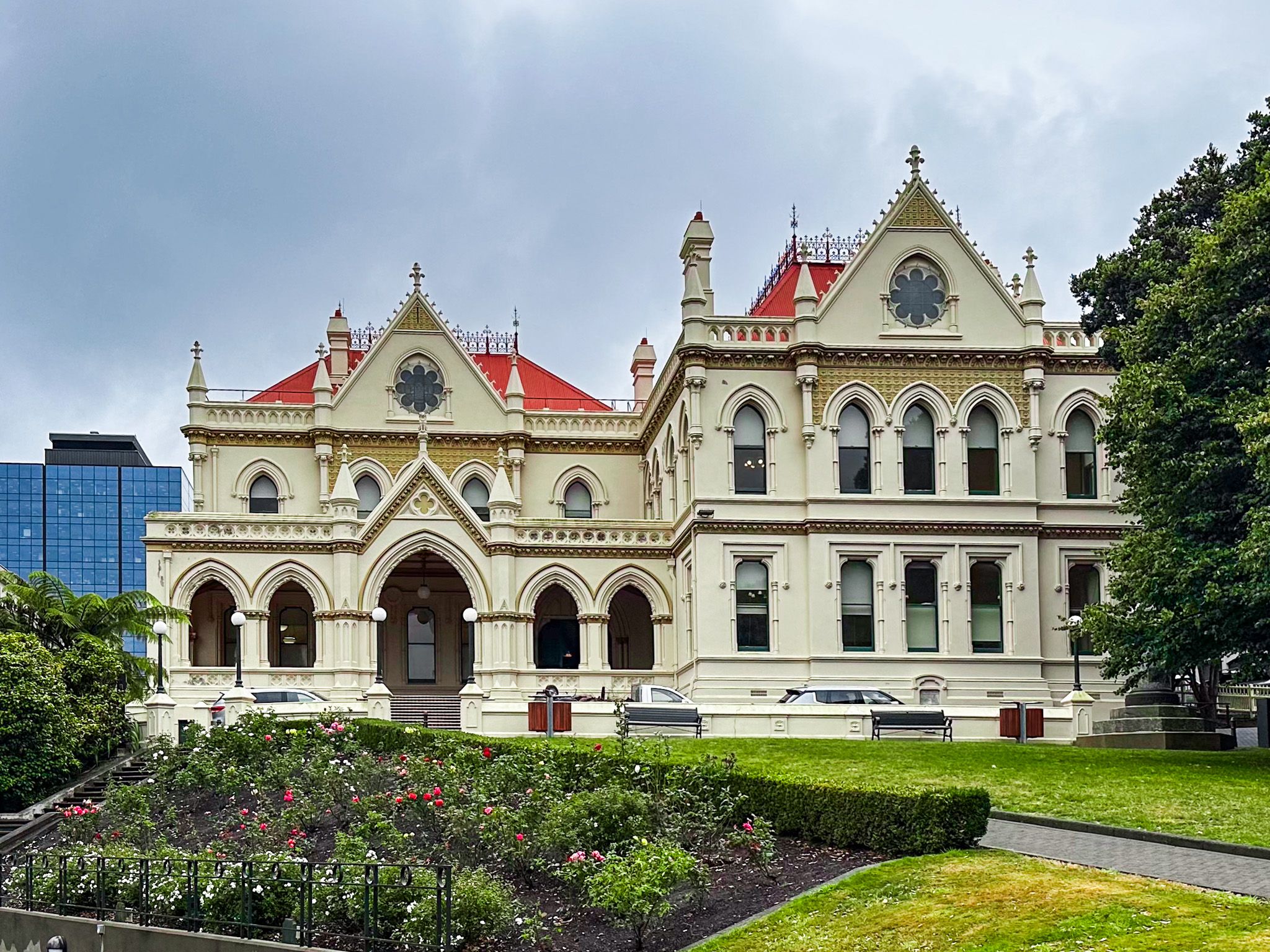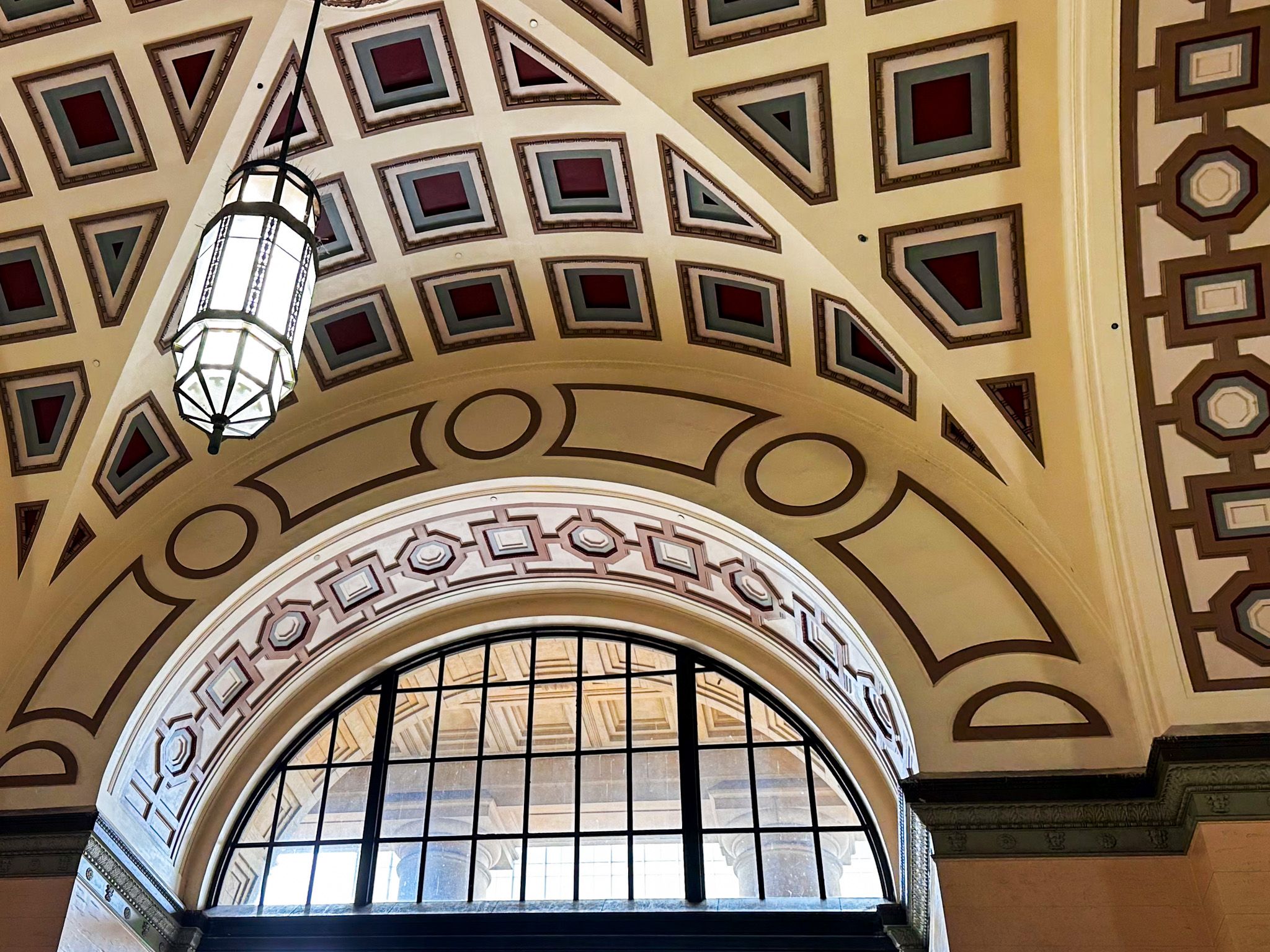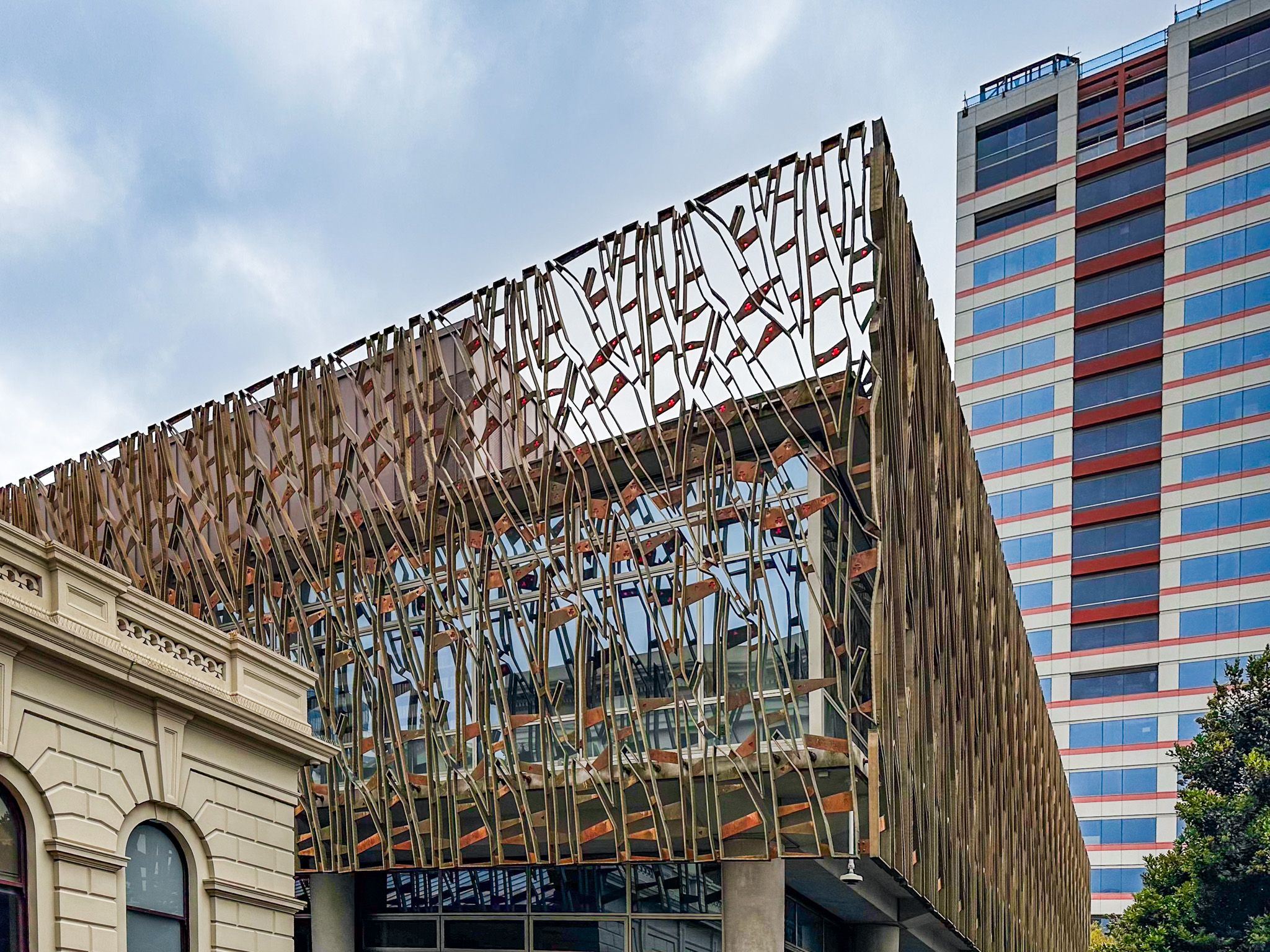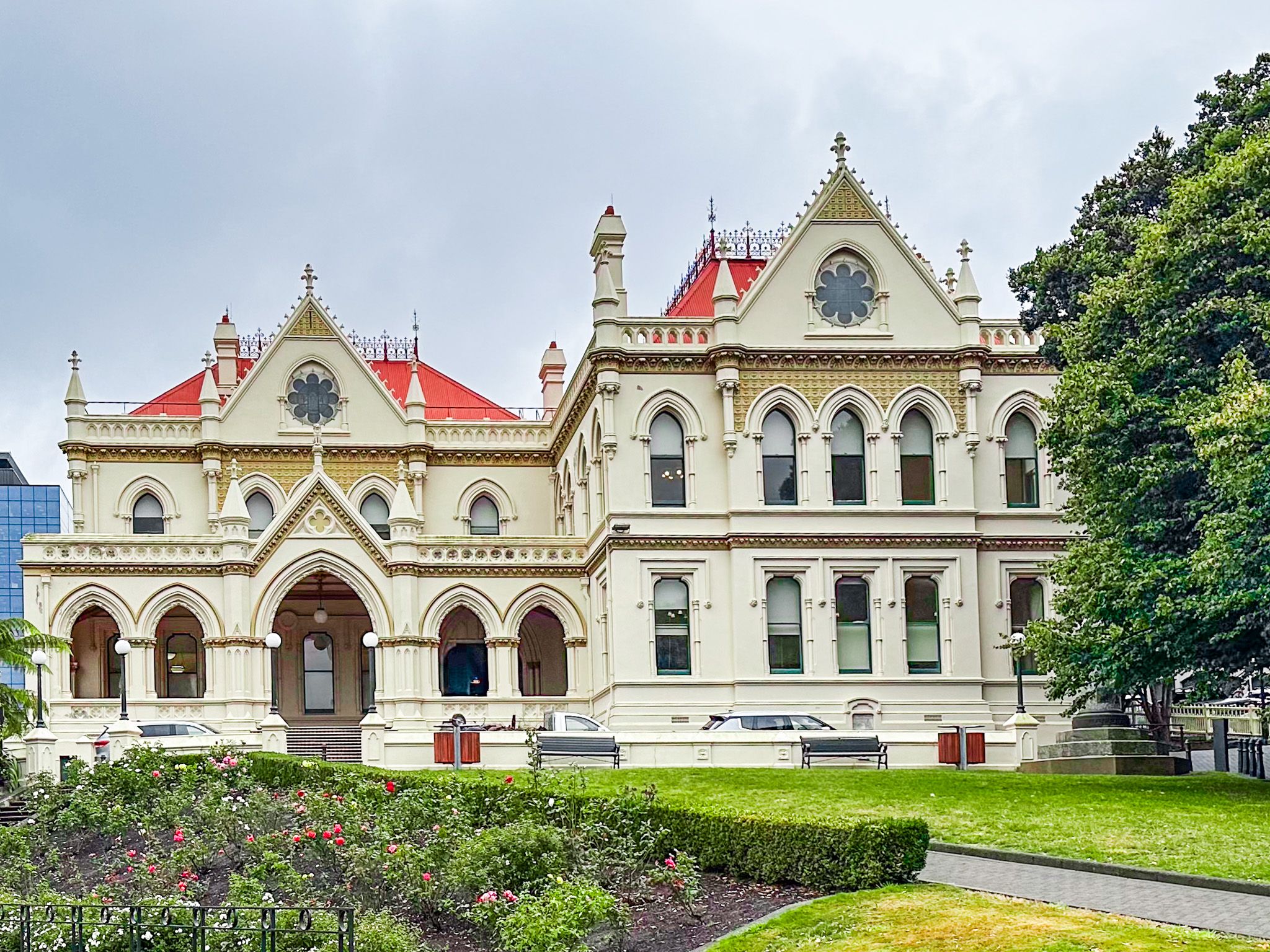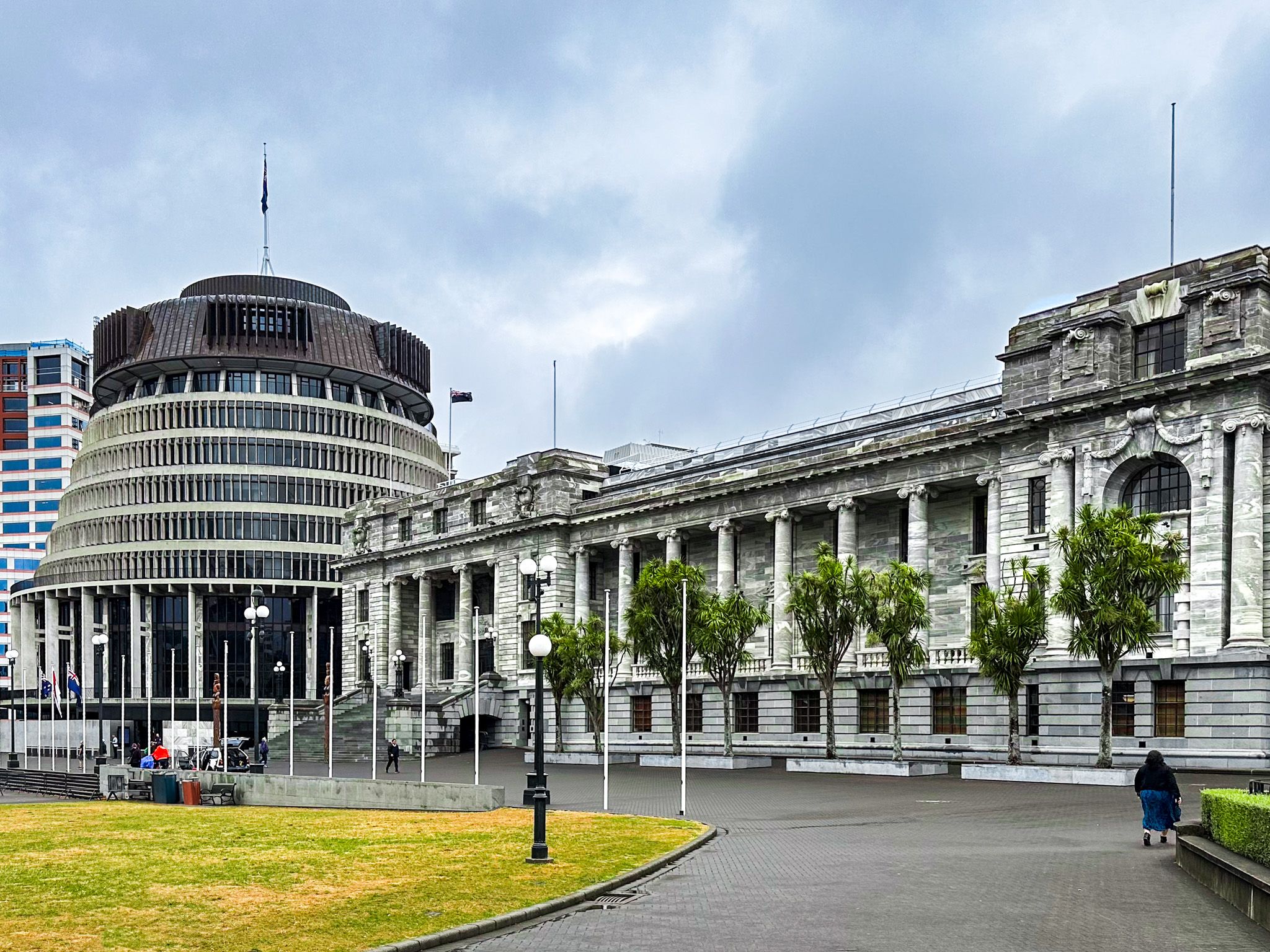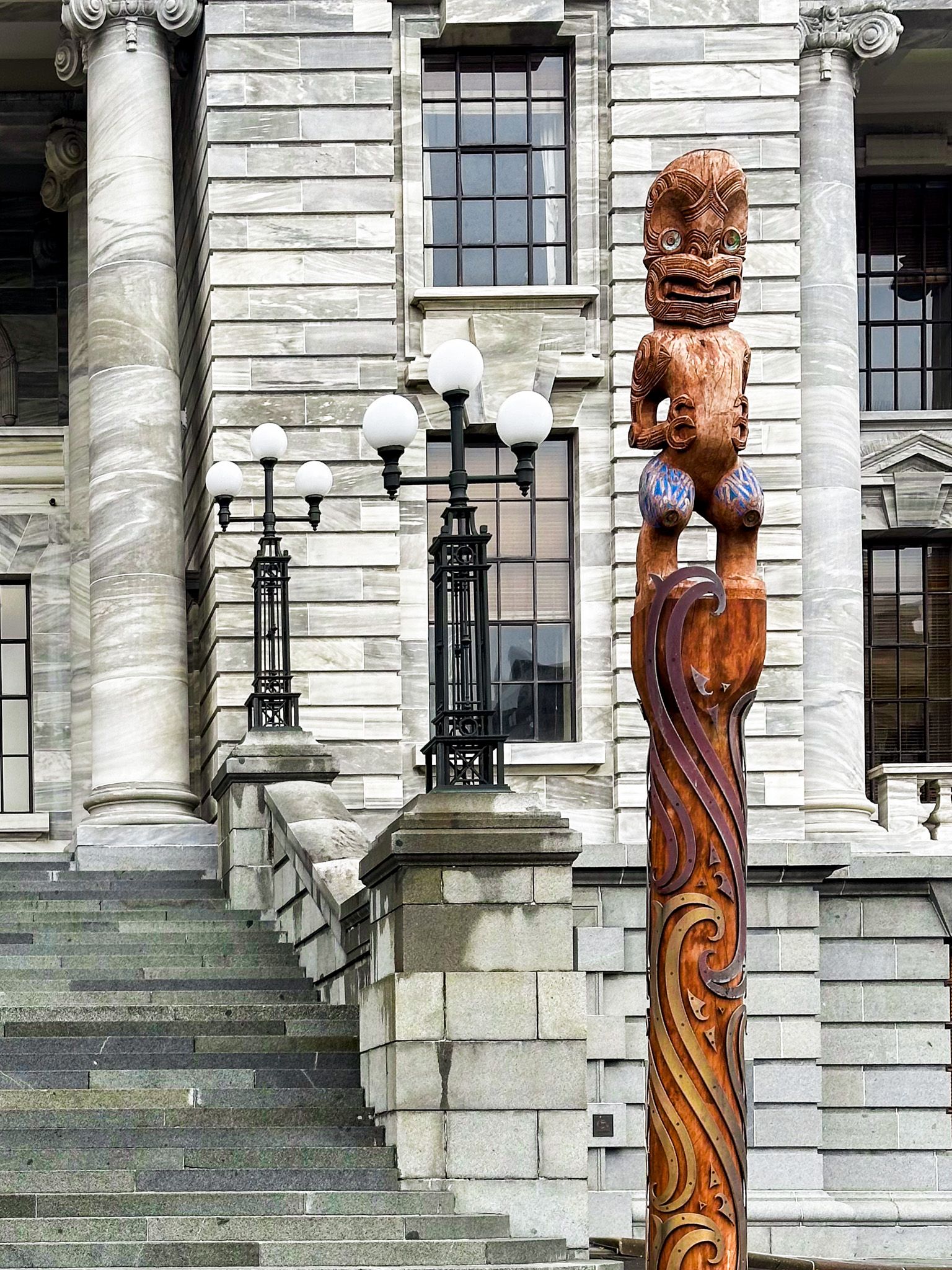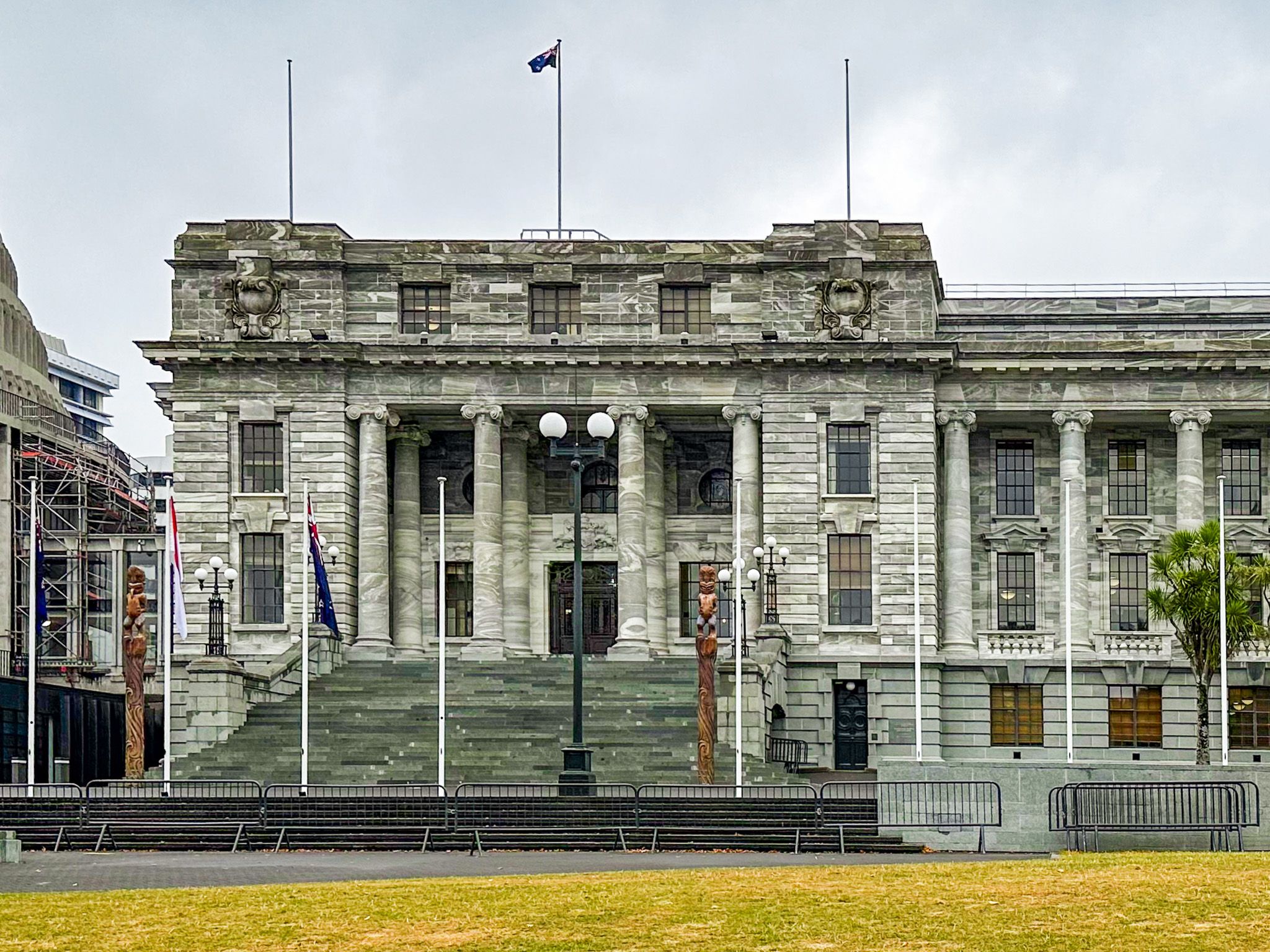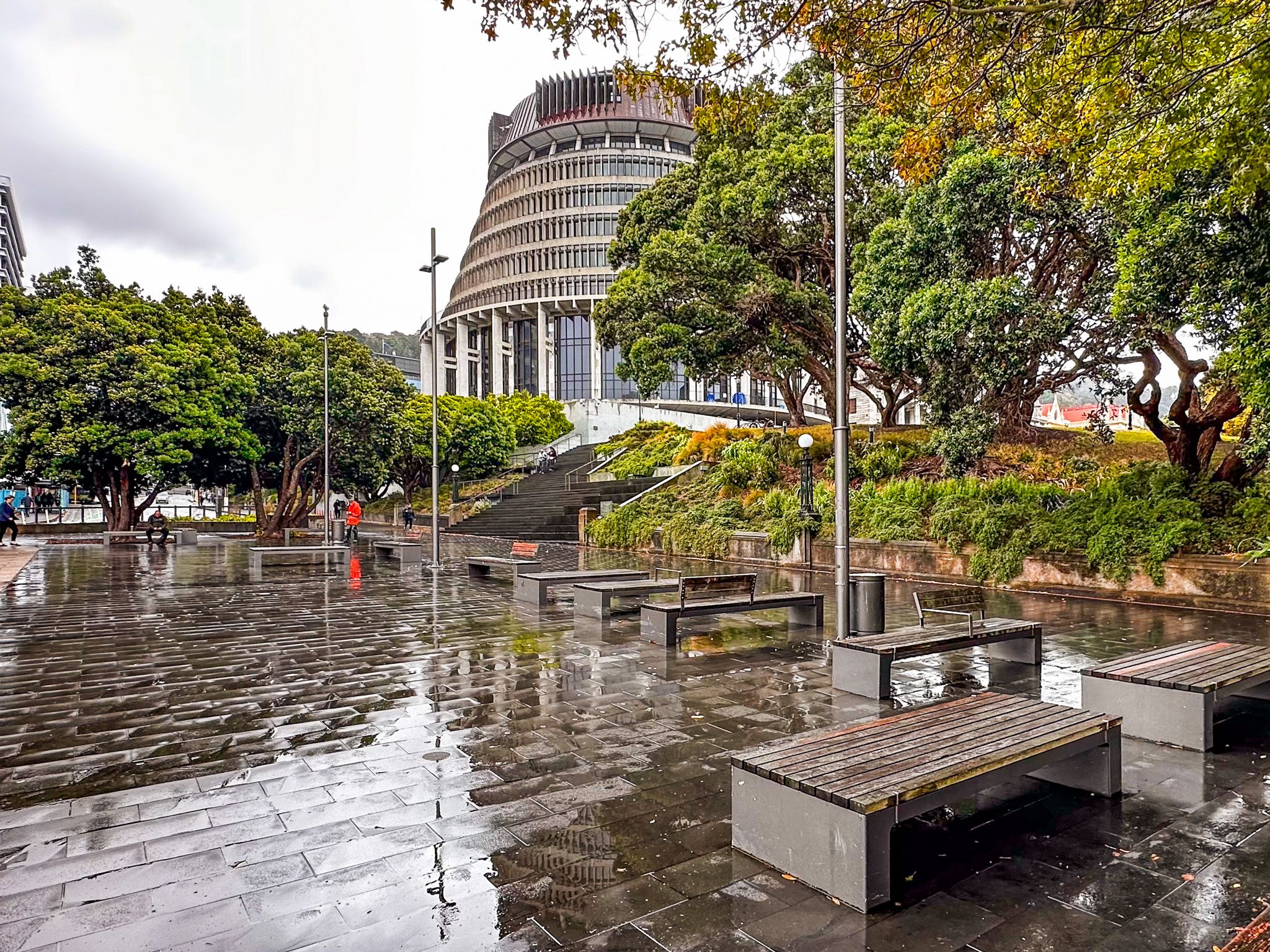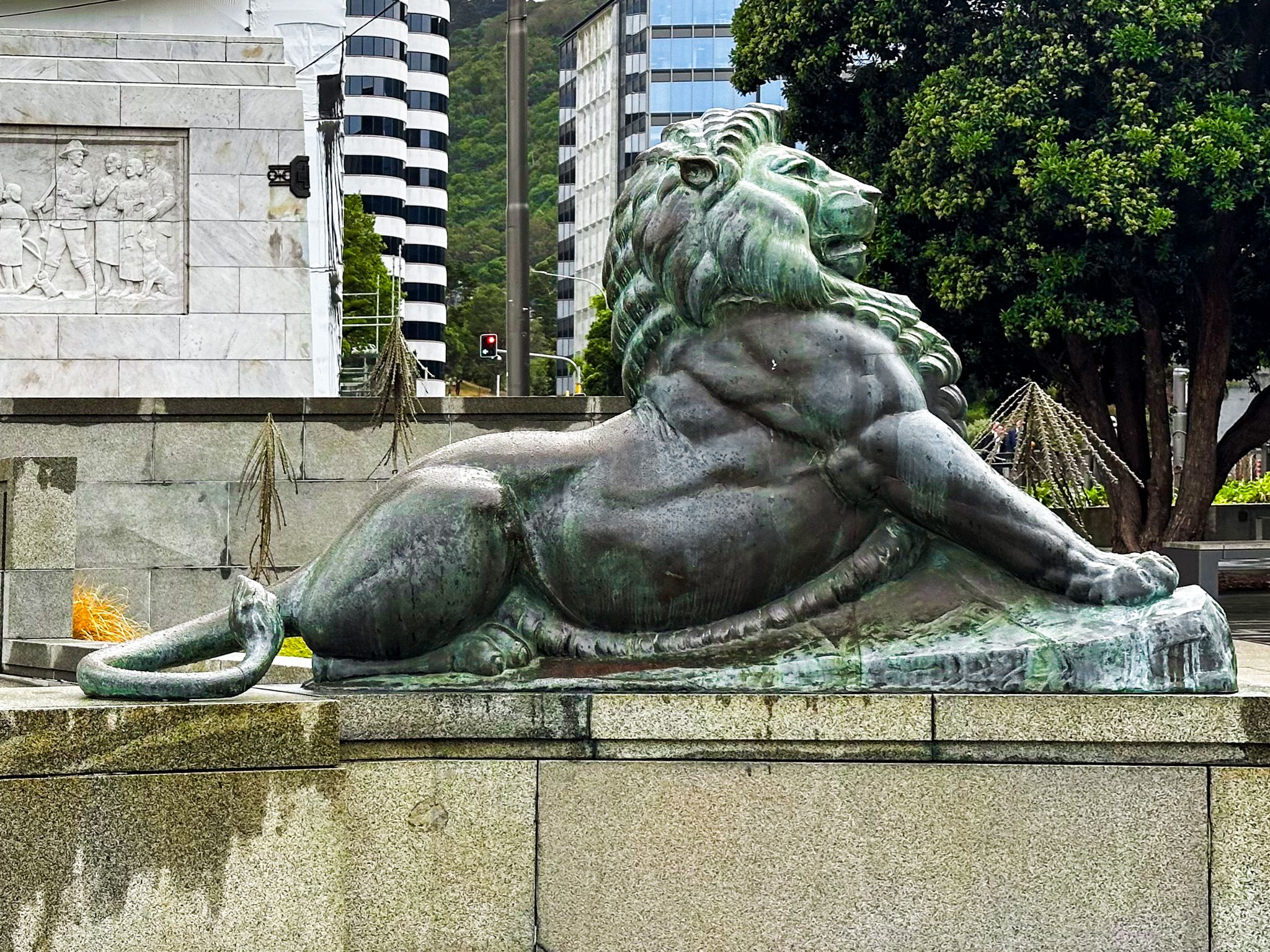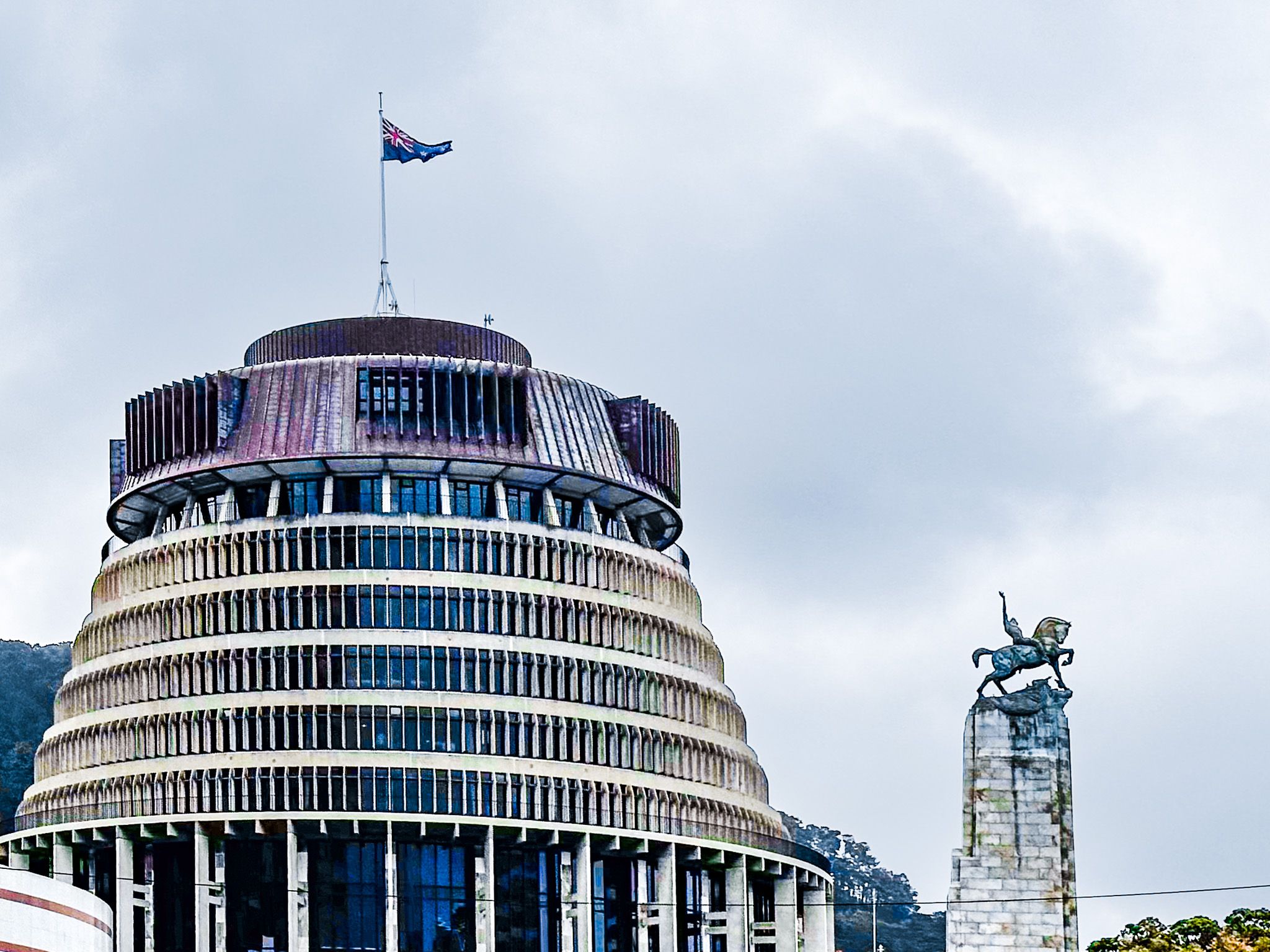The Parliament Precinct in Wellington is at the north end of the central city. It is bounded by the Wellington motorway to the north and west by Thorndon Quay to the east. At the southern boundary of the precinct are the Wellington Railway Station, Old Government House and the Supreme Court. The most interesting part of the precinct is lower Molesworth Street, which runs from Old Government Buildings, past the Beehive, Parliament, the National Library and the Cathedral of St Paul’s.
The precinct consists mostly of government buildings and embassies with an eclectic mix of architectural styles. These styles reflect the period in which various buildings were developed and the sometimes curious government objectives of the time.
Old Government Buildings were the first major development after Wellington became the capital in 1865. The buildings were completed in 1876 in an Italianate, Neo-Renaissance style. The objective was to create a sense of permanence inherent in an Italian stone palace, but due to cost, the buildings were made entirely of kauri wood but made to look like stone! It's probably a good thing as wood buildings are better in an earthquake. OGB was the second largest wood building in the world for over 100 years and today contains the Victoria University Law School.
Across Lampton Quay is the Wellington Cenotaph, with its man on a horse monument and two prominent lions. To the west of the cenotaph is the colourful, modern Bowen House (1990), which houses parliamentary offices. In front are the Beehive, parliamentary grounds, and three buildings.
In the 1860s and 1870s, Parliament was initially in the wooden Provincial Council Building. In the 1880s, it was replaced by a new wooden Gothic Revival building, which was destroyed by fire in 1907. For a decade, Parliament continued in another building where the Beehive is, but this was unsuitable, and a competition was held to find a replacement design. The winning design, by Government Architect John Campbell, was for the current Neoclassical building. It was built during WWI, and many ornamental features, including a domed roof, were excluded. In 1918, MPs moved in, although it was not fully completed till 1922.
Parliamentary Library (1899) is the oldest survivor of the buildings. It is north of Parliament House and was designed in a Gothic Revival style. Unlike the then Parliament, it was fire resistant and constructed of masonry with an iron fire door separating the library from the main entrance section. This saved the building in the fire of 1907.
The Beehive was conceived by British architect Sir Basil Spence in 1964 to provide a new premise for the executive branch of the NZ government. The final design produced by the Ministry of Works was controversial, both disparaged and admired for its modernism, but it was completed in 1979. The “Beehive" monicker was a nickname that stuck for obvious reasons. The building is ten storeys high, and the cabinet and prime minister’s office are on the two top floors.


